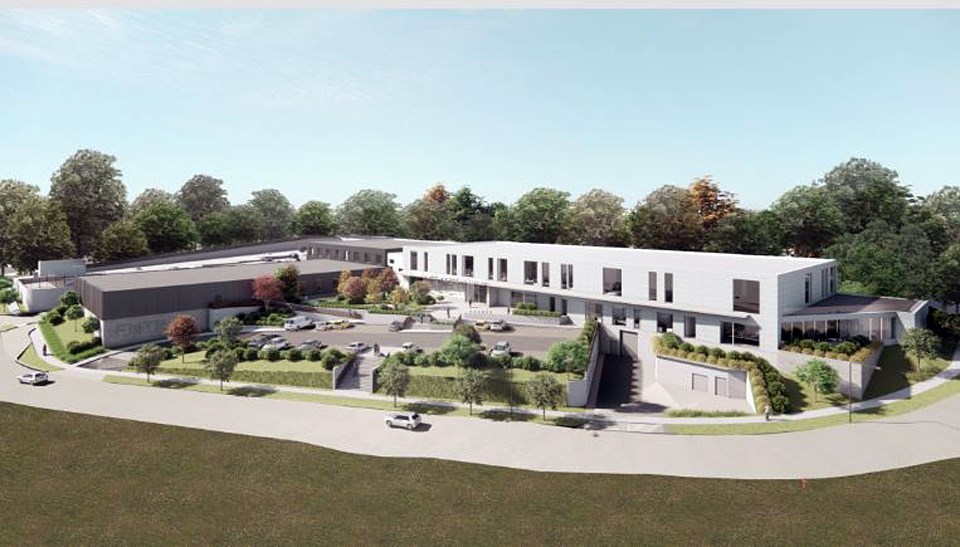City staff revealed a sneak peek this week of what Burnaby's new $229-million RCMP detachment could look like when it's complete.
Council approved design and construction of the facility between Norland and Ledger avenues in January 2024, and the project is now 11 per cent complete after breaking ground in June 2024, according a report to the city's financial management committee Tuesday.
The project involved what director of civic projects Charles Allan described as a "pretty deep excavation" because of the facility's underground parking lot and a hill at the west end of the property.
"There's been a continuous flow of dump trucks flowing through the site," Allan told the committee.
Foundation work is currently underway, according to the report.
Allan said construction at the site has run parallel with design work thanks to multiple permits, and 90 to 95 per cent of the overall design is expected to be complete by the summer, with room for "final adjustment and tweaks."
In the meantime, Allan presented the committee with the latest renderings of the project, including flyover and fly-around videos.
Interior shots show a bright, spacious lobby and waiting area inside the front entrance off Ledger Avenue.
During an official groundbreaking, Burnaby RCMP's top cop Chief Supt. Graham de la Gorgendiere said he was looking forward to the new detachment having a more "welcoming" entrance with more natural light and public space than the current building at 6355 Deer Lake Ave., built in 1967.
Just off the entrance, the current renderings also include a multi-purpose room for police or public use, according to Allan.
Foundation work is expected to continue into the third quarter of 2025, with structural work expected to last into the end of 2026.
The facility is expected to be complete in late 2027, with the handover expected to be in early 2028.
Coun. Alison Gu asked if staff was looking at how tariffs might impact project costs.
Allan said, where possible, they are looking for alternate suppliers for materials that were originally planned to be sourced from the U.S.
The design team is also looking at alternative specifications for materials that can be sourced locally.
"In all cases, the teams are looking at ways to mitigate any potential tariff impacts," Allan said.
Follow Cornelia Naylor on X/Twitter @CorNaylor
Email [email protected]





